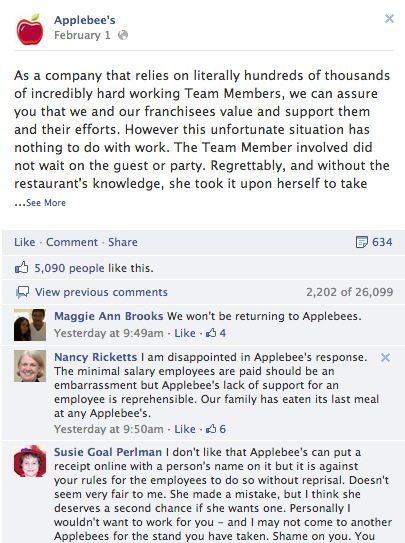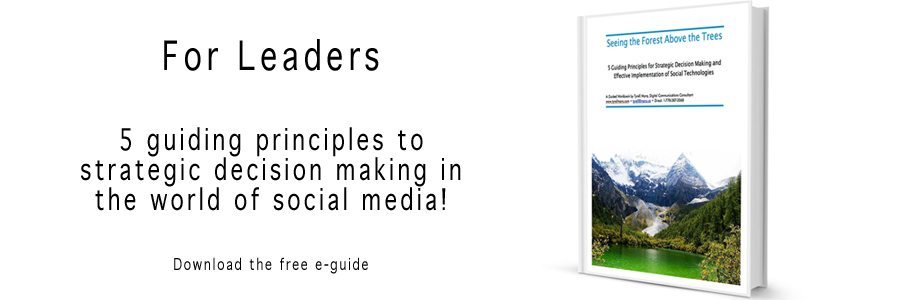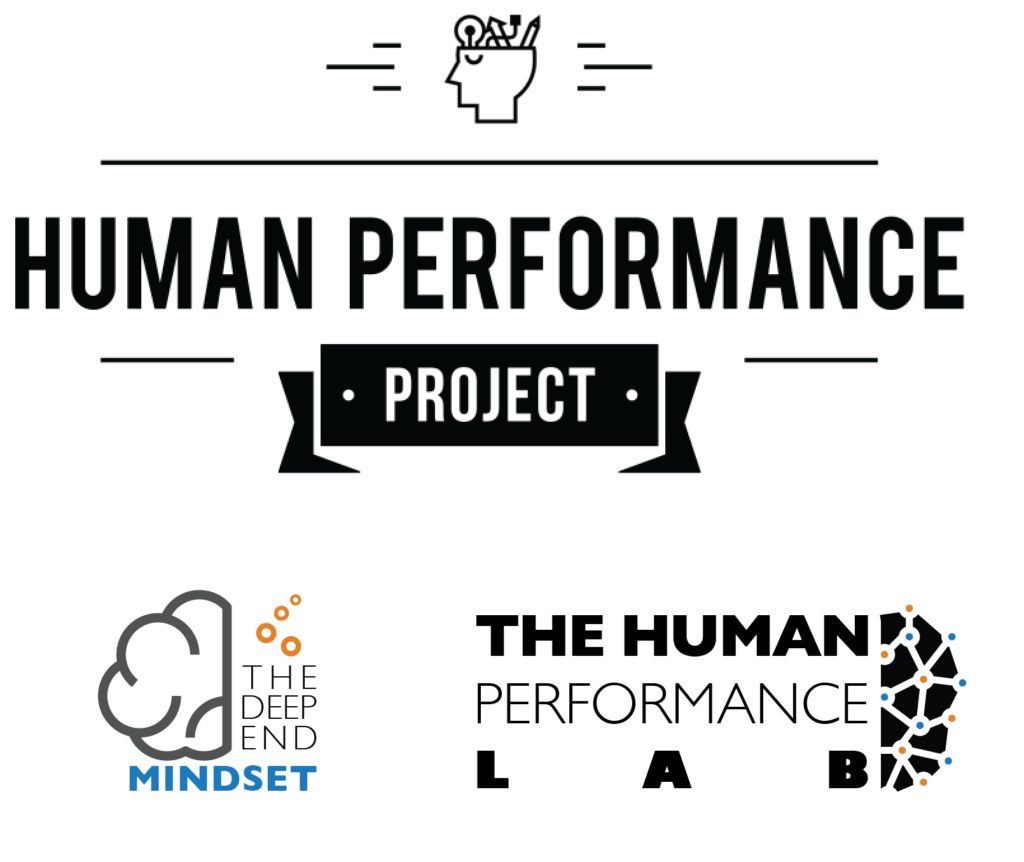core beliefs of effective social media strategy
I have always held the belief that creating value, both in business and in life, is closely tied to the conversations we have and the relationships we build on a daily basis. In the past two years I have had the fortunate opportunity to work with many businesses and entrepreneurs in applying this model to social media and communications strategy. While there is an endless amount of noise, questions, and confusion in the social media field – I still believe value can be broken into a very simple steps:
1) identify your tribes and find them online
2) remove all the noise and focus on those conversations and communities
3) listen deeply and engage in conversations that add value
4) develop relationships and build highly targeted and qualified communities, eventually taking those interactions offline.
This process will of course look slightly different depending on each business and their industry, outcomes, and goals. What won’t change is the value of engaging in meaningful conversations throughout the strategic process that builds key business relationships and communities.
I have talked at length about how to execute this as the output of a social media strategy, today I want to shift gears and highlight some of the critical “initial” conversations that NEED to take place before that strategy is executed.
“that social media thing”
To this day I meet with entrepreneurs and business owners who ask for “that social media thing”, “we’ll pay you whatever you want to just set it up for us”… For me this always presents a great opportunity to push back with some interrogating questions:
- “why do you need any social media in the first place?”
- “have you talked about social media will integrate with communications and the business overall?”
- “what are some of your desired outcomes, and how will you measure these?”
- “have you thought about how you would react if you have some type of negative comment or public crisis occurred? What would your response be on social media AND who would be involved in that process?”
- “how will you express your unique voice through your strategy?”
Many times these questions are met with blank stares, but as the conversation unfolds, they begin to understand the value in having some of these initial conversations before jumping in without a clue. If this past week’s Applebee’s social media meltodwn is any indication of how detrimental the lack of these conversations can be, I would argue they are worth it.
how not to do “that social media thing” – Applebees Meltdown
If you want the full story, R.L Stollar‘s post does a fantastic post breaking down the Applebee’s debacle. Here’s a quick summary: Applebee’s employee took a picture of customers negative comments on a receipt and posted it to Reddit, Applebee’s found out and fired her, the blogosphere and social media world caught wind and began a major protest against Applebee’s, and well, below you can take a look at how they responded!)
With now over 60,000 negative responses on Applebee’s 3 Facebook status updates addressing the issue, hundreds of blog posts and boycott groups forming, and the general social media buzz associated (for example R.L’s above article has accumulated 1.2 million views in the past week), it is clear that this will hurt Applebee’s brand and more importantly their bottom line.
crticial missing ingredients to the social media strategy
There are so many critical conversations and questions that seemed to be missed or skipped in the Applebee’s situation. From the big picture, systemic questions regarding ethics and corporate responsibilities, down to the detailed crisis management questions like “with negative feedback and eventually a crisis, what is the communication process, who is involved in those key strategic conversations, what role does social media play in the overall crisis management process, what procedures should the social media team follow, etc?”.
Had all of these initial strategic conversations been had and processes and standard operating procedures’s be put in place, my guess is that the response from Applebee’s would have looked significantly different. Instead we watched what looked like an isolated social media team (person) posting random updates between 2-5 AM, deleting negative comments (major no-no), hiding their status posts (double major no-no), and even arguing with individual fans through their social media channels.
Most notably, what highlights Applebee’s not having some of those critical conversations is the lack of any course correction when the first attempt to “do good PR and social media” hugely backfired. I get no impression that once it was clear that there was some major negative momentum and public profile at stake that the social media team involved key decision makers at Applebee’s and executed a crisis management strategy.
If they did, then there are obviously some bigger organizational issues at play.
Oreo’s flash of brilliance
A positive example of a robust strategy in action is Oreo’s recent Super Bowl picture tweet (Power out? No Problem! “You can still dunk in the dark”). This single tweet and picture was quickly and virally circulated around the web and blogosphere with tons of positive comments and sentiment sentiment.
To execute this great “content hijacking” strategy, Oreo didn’t have time to have the many iterations of intense big picture conversations that would inform their social media and communications strategy. That groundwork had already already been laid. We can also see that there was clear communication and integration between the social media team and other areas of the business. In fact, Oreo knew how important the Super Bowl was and had a war room of executives and key decision makers ready to act. This focus and intentional integration of key decision makers in Oreo’s overall communication strategy is what allowed them to capitalize on the opportunity!
The result was no less than impressive… And viral!
pop culture engagements (like Oreo’s SuperBowl tweet) is hard to do. And it needs to be done all the time…-Ben Winkler, Chief Digital Officer, OMD
social media and communications strategy. Start the conversation!
My point here is that social media as a part of an organization’s communication strategy needs to have thought, consideration, key questions, objections, debate, and meaningful conversation thrown at it before it is exactly that… A strategy. Not only will this lead to the successful implementation of a truly value-added strategy, but it will also ensure that when the unforeseen happens, you will be ready to act in alignment and integration with the overall organization.
Here are some starting points as you, your team, or your organization begin to have a conversation around your social media and communications strategy:
- Start with the big picture
- get a 10,000 foot view of what you want your social media presence to look and feel like. Can you describe it in one or two sentences?
- From there start working down, addressing various components such as:
- where is our target market/demographic online?
- what channels can we vibrantly show up in?
- how much time will we invest as an organization?
- how much money will we invest as an organization?
- based on this time and dollar investment, what are our desired outcomes and objectives?
- how will these outcomes and objectives be measured?
- Talk about how you will handle negative comments and reactions. Put in place processes that ensure that your social media communications are aligned with the core values of the business.
- If you have a social media team, how will they keep key stakeholders (managers/other departments) in the loop and updated?
- Implement some basic internal communication process
- Discuss social media policy and consider addressing not only standard operating procedures, but also the voice and tone that this communication channel must adopt to align with the organization. This will help empower your social media team/leader to make decisions.
- Engage in continual improvement. Build in the opportunity to check in with your social media team on a regular basis to address any gaps not covered. This needs to be an ongoing conversation.
Just like many things in life and business, the amount of energy and focus you put into your social media and communications strategy will directly affect the outcomes. This doesn’t mean you have to be social media savvy or know how to send a tweet or post on instagram. What it does mean is you have to start the conversation, begin asking the right questions, and engage the right people in the process.
You can start the conversation right now, either in the comments below, or feel free to touch base with me directly, I’m here to help and support you on this journey!
~Tyrell
Subscribe for a monthly dose of inspiration… Similar to what you just read above!




